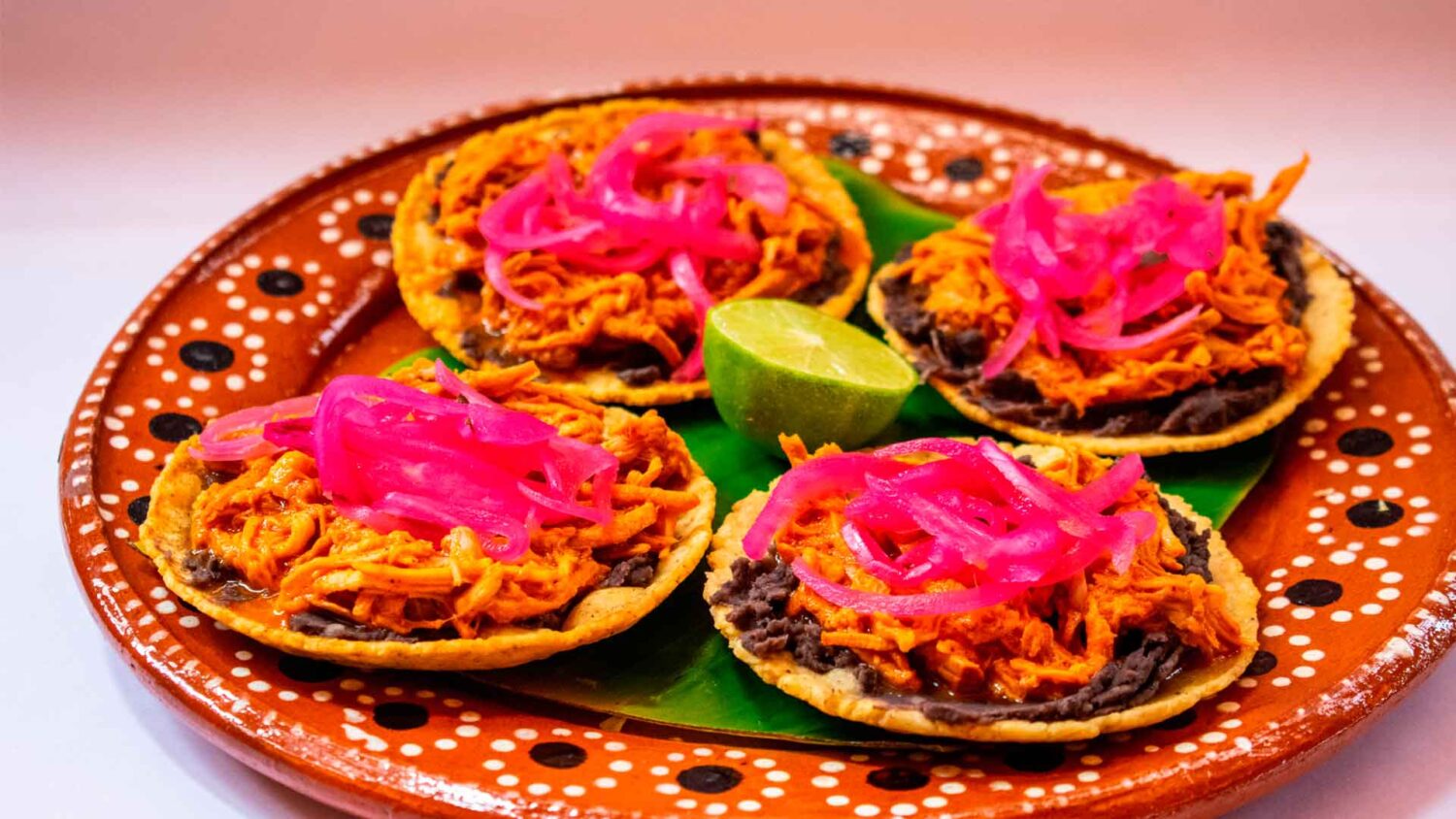6 Antojitos Yucatecos You Can’t Miss When You Visit The Yucatan Peninsula
A street food guide of the flavors from the Peninsula
Since pre-Hispanic times, Mayan people have been taking their time creating the roots of our now beloved Yucatecan cuisine. Always using the best ingredients from each region of the Mexican southeast. It is believed that these dishes were created in rural areas and later consolidated in large cities such as Mérida or Valladolid in the state of Yucatan. The Spanish Conquest, and the arrival of Lebanese immigrants in the early 20s, helped these dishes evolve, by adding exotic ingredients brought from distant lands that would become part of our current Mexican gastronomy.
ANTOJITOS (ahn-toh-hee-tohs)
From the word Antojo, which means “Craving”, antojitos are snacks eaten at informal settings or before meals and usually sold at street stands, or even in finer restaurants as appetizers. They are usually made with tortilla or corn dough and have some basic protein. Antojitos can also be the main meal, breakfast, or dinner, and not just a meal between meals, and the best thing is you’ll find that each region of Mexico has its own typical antojitos.
The Yucatan Peninsula is worldwide renowned for the variety and excellent flavor of its traditional dishes. There are so many that sometimes, we get confused, we do not know if it’s best to eat on the street or in a restaurant, we have no idea what is written on the menu or what the vendors shout out loud at the beach or the plaza, so to help you out, let me tell you a little about our favorite Yucatecan cravings so that you can get an idea of the delicacies that you are about to try on your next visit.
1. SALBUTES Y PANUCHOS
These might be the two most popular Yucatecan Antojitos, easily found everywhere in the peninsula and usually served with a variatey of toppings, like cochinita, beef, chicken, turkey, fish, scrambled egg, or other stews –guisados– such as relleno negro. The two might seem very similar from each other but the cooking process and beans mark the difference:
Panuchos (pah-NOO-chohs)
 Credit: cocinavital.mx
Credit: cocinavital.mx
Made with corn dough, cooked on a hot cast iron skillet (comal) until slightly puffy, then a crack is made in the tortilla, and then stuffed with refried beans, sealed and finally lightly fried.
It is then topped with tomatoes, lettuce, a slice of cucumber, avocado, pickled onions, and your choice of protein.
Salbutes (sahl-BOO-tehs)
 Credit: gourmetdemexico.com.mx
Credit: gourmetdemexico.com.mx
These ones are not precooked on the comal, the tortilla is fried first and then topped with the same ingredients as the panuchos, but without the refried beans inside the tortilla. Salbutes are always greasier than Panuchos. There’s a great spot in Merida to try the most delicious Salbutes, so book our Mérida Local Experience to make sure you don’t miss out on this delicacy!
2. KIBIS
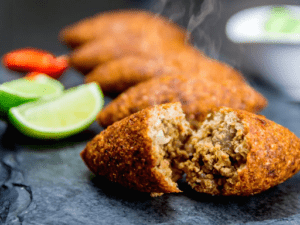 Credit: https://topadventure.com/
Credit: https://topadventure.com/
Lebanese heritage to Yucatecan Cuisine. Middle Eastern dish, similar to meatballs, made from crispy fried wheat dough. Traditionally stuffed with ground meat, however, nowadays you can find Kibis stuffed with Edam Holland cheese, ham or cochinita. They are mostly served with a side of typical ingredients from the Yucatan Peninsula like red onion pickled in sour orange juice, and chile habanero.
Lebanese immigrants, hoping to be accepted by Yucatecans, offered them their traditional dish which eventually, became a highly appreciated antojito in Mexican gastronomy.
You can find them in most restaurants that serve traditional Yucatecan dishes, also by walking around town at street stalls or even at the beaches of the peninsula, they are usually kept in glass cases, and vendors are easily recognized by their characteristic cry of “kibis, kibis, kibis!”
3. PAPADZULES [papaˈtsules]
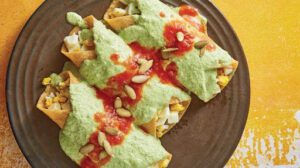
Credit: Cocinafacil.com.mx
This term of Mayan origin comes from the words papak, which means “spread” and zul, which means “to soak”.
Merida locals’ favorite dish consists of corn tortillas soaked in a sauce made with pumpkin seed, stuffed with chopped boiled egg, rolled up like tacos, and topped with more pumpkin seed sauce and a little tomato sauce. There are also black papadzules, although they are rare, in which the pumpkin seed sauce is substituted for strained beans. Ideal for vegetarians and omnivores alike.
4. TAMALES YUCATECOS
They are the most ancient antojitos in Yucatán. They are made from a thin layer of dough, stuffed with chicken, pork, or turkey, wrapped in banana leaves, and steamed. There are more than a few variations of the Yucatecan tamales, here are a couple of classic examples:
Tamales Colados
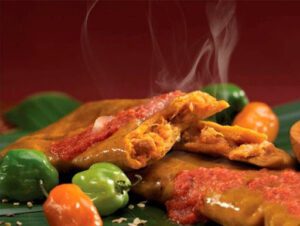 credit:blog.xcaret.com
credit:blog.xcaret.com
To make this type of tamale, the dough needs to be strained, which gives it a soft and delicious texture. These tamales are steamed and wrapped in a banana leaf and stuffed with chicken. They are usually accompanied by tomato sauce with habanero chili.
Brazo de Reina
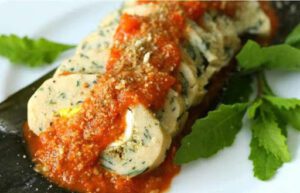 Credit:grupo-crio.com
Credit:grupo-crio.com
This is one of the vegetarian options in Yucatecan food. It is stuffed with chaya leaf (also known as Mayan spinach) , ground pumpkin seed and hard-boiled egg. It can also be filled with Edam cheese. It is served in tomato sauce with habanero pepper, and in some recipes, the dough is mixed with xpelón seeds, which is a type of Yucatecan bean, or stuffed with ibes beans, which are a type of white bean, ground pumpkin seed, tomato sauce, and chives, it is wrapped in hoja santa and traditionally eaten during Easter.
You can learn more about tamales and how to prepare them in our post: Tamales: Ancient Food On Your Table.
5. EMPANADAS
 Credit: lacusinedenenisq.blogspot.com/
Credit: lacusinedenenisq.blogspot.com/
I think most of us have tried Mexican quesadillas, each of the states of Mexico gives them its own style and Yucatan is no different. These empanadas are made of corn dough adding other ingredients so that the dough takes consistency such as a little flour, salt, and sometimes baking powder, then they are stuffed with meat, chicken, ground pork, cheese, beans, or chaya and deep-fried. Once ready, it is optional to add spicy tomato sauce and pickled white onion, most people like to add cabbage or lettuce, fresh cheese, cream, and avocado.
Empanadas can be found almost everywhere from food stalls to markets, but if you’re in Playa you have to try out our Cooking Workshop and prepare your own empanadas from scratch!
6. AND FOR DESERT: MARQUESITAS
 Credit: chilango.com
Credit: chilango.com
Our favorite dessert, to finish a food tour or a Caribbean evening walk.
Stuffed, crispy crepes, traditionally with “queso de bola” or jam and wrapped like a taco, #becauseMexico.
The ingredients of the marquesita consist of a batter made out of flour, egg, milk, and butter that is pressed on a grill to make a thin crepe. Then, you can choose between cheese and fruits such as strawberry or banana, peanut butter, or chocolate syrup to add on top and rolled up for you to enjoy.
Undoubtedly a classic treat that you cannot miss.
There’s much more in Yucatecan food than just Antojitos.
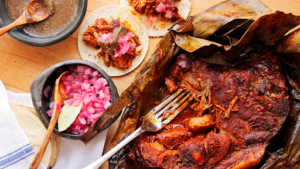 www.ngenespanol.com
www.ngenespanol.com
It’s no question that Yucatan holds one of the top places in Mexican Gastronomy. I promise to give you another post talking more about other traditional dishes this area has to offer. In the meantime, if you are willing to wonder your palate with new amazing flavors, Yucatan and Quintana Roo might be your next destination, delight yourself by walking around town on any of our food tours and eating as many antojitos as you can, hope to see you around!
-Abbey
P.S. Don’t forget to check out our Cochinita Recipe so you can try the most iconic Yucatecan dish at your home.

